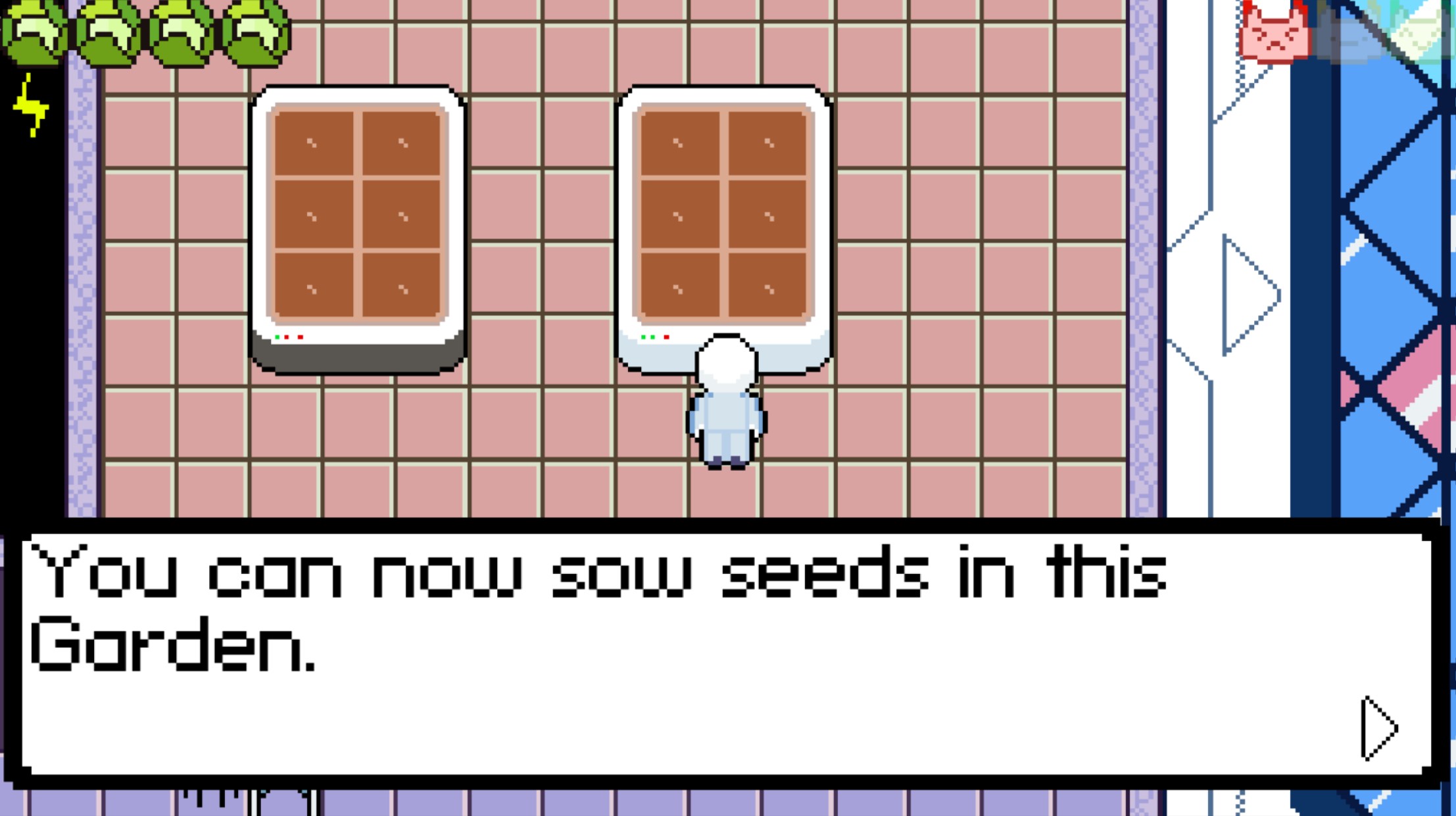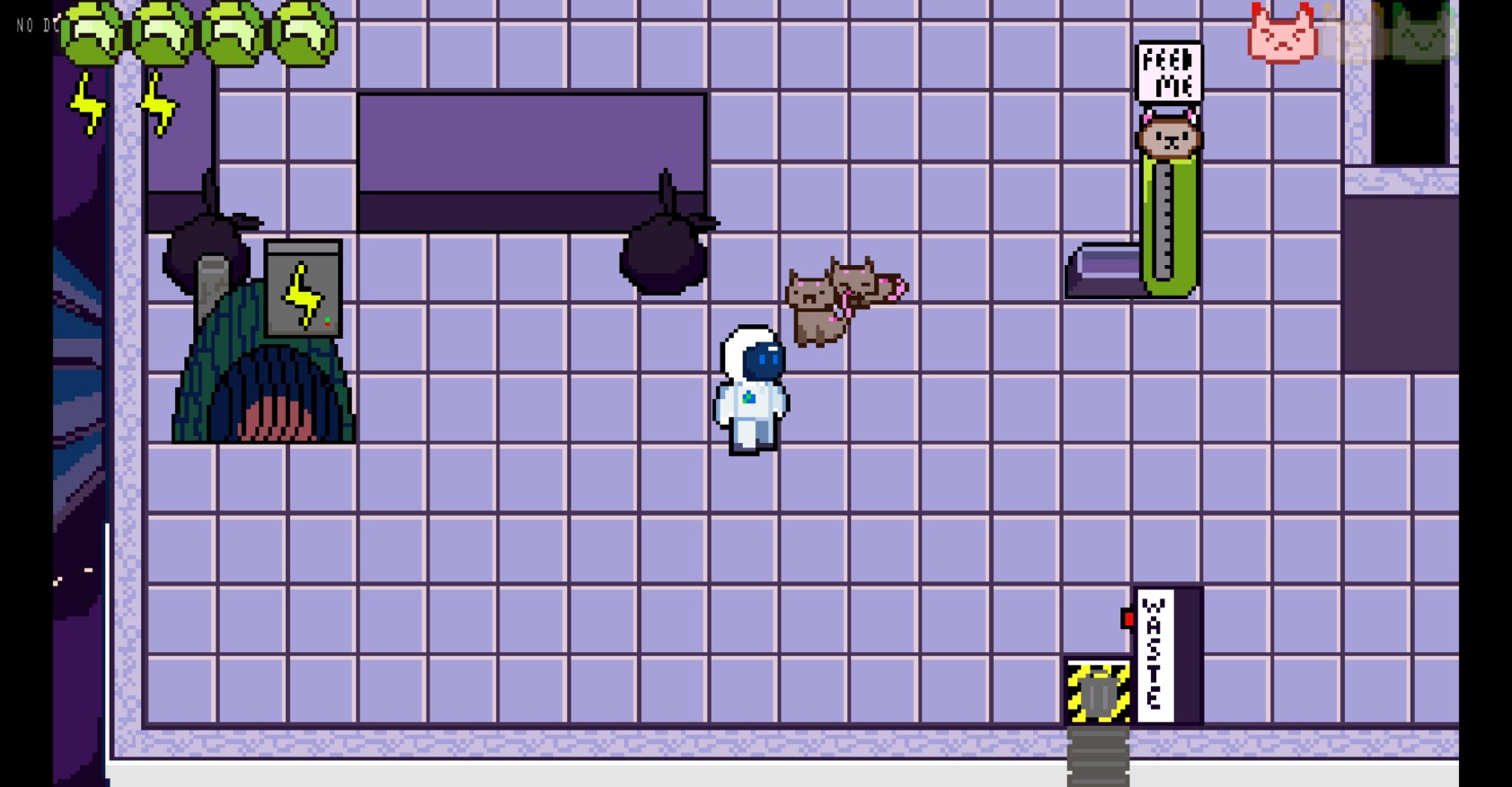Mogship
Mogship is a 2D top down RPG where you play as a lone astronaut on a spaceship with a broken down generator and you must balance your remaining resources to feed you and your pet ‘Mogs’.
Created for my VCE 3/4 media project, I designed the entire game from the game systems, code, and art.
Play the game on itch.io
The narrative parallels the real world climate crisis, conveying the need to strive for balance in society and how every outcome brings forth unique consequences. My product is targeted towards children with an interest in the environment who love to learn concepts with a hands-on approach.
The game employs resource managing conventions to emulate the role that governments play in balancing the priorities of the climate versus the interests of the population. The happiness of cute ‘Mogs’ increases along with their population size, which grows as they are given more resources. This causes a dilemma for the player as they must either sacrifice the happiness of their creatures or meet the growing demands of the Mogs which if kept unchecked will result in overpopulation and death due to lack of resources.
I designed the UI to be intuitive and simple to read, intended for younger audiences. In the top left, are icons showing the levels of power and food available. On the top left is the happiness indicator for your ‘Mogs’. Although there is a simple equation for the level of happiness for the Mogs (happiness= (10-pollution) * population, under 15 is sad, 15-35 is neutral, above 35 is happy), this information is purposefully hidden from the player as it reflects how the mood of the public is hard to gauge and satisfy. The screen also pulses green when the player character is hungry which alarms players signalling they must eat, otherwise an adverse consequence will ensue (death).
I programmed these activity ‘minigames’ to feel tactile and pleasant, as to invite the player to be lost in the activity itself. By structuring the gameplay in segments of Classroom>Activity>Memories>Classroom, players are given a portion of time to take in and process the narrative, inciting introspection which was a key goal of the short experience.
Towards the end of my game production (around two weeks before the deadline), I created a survey which included art pieces I had made asking which game features should be expanded upon. I sent this to the target demographic of teenagers and young adults of varying interests, to better understand which features would most engage my target audience allowing me to prioritise those features the most and add extra “quality of life” changes and features to appeal to their interests.
- Role/s: Game Designer
- Team Size: 1
- Engine: Godot
- Duration: 6 Months
- Project Type: Game Development








